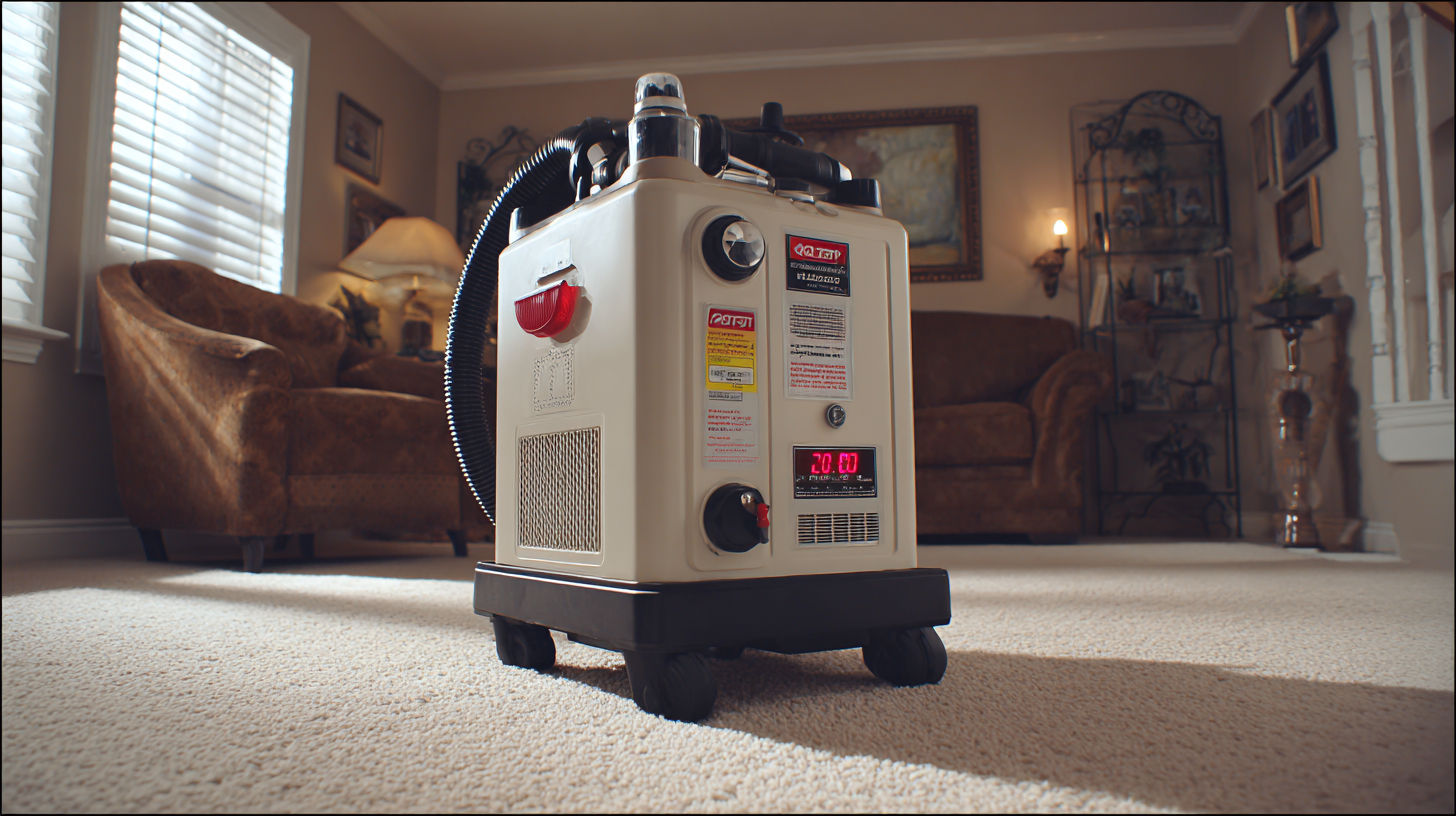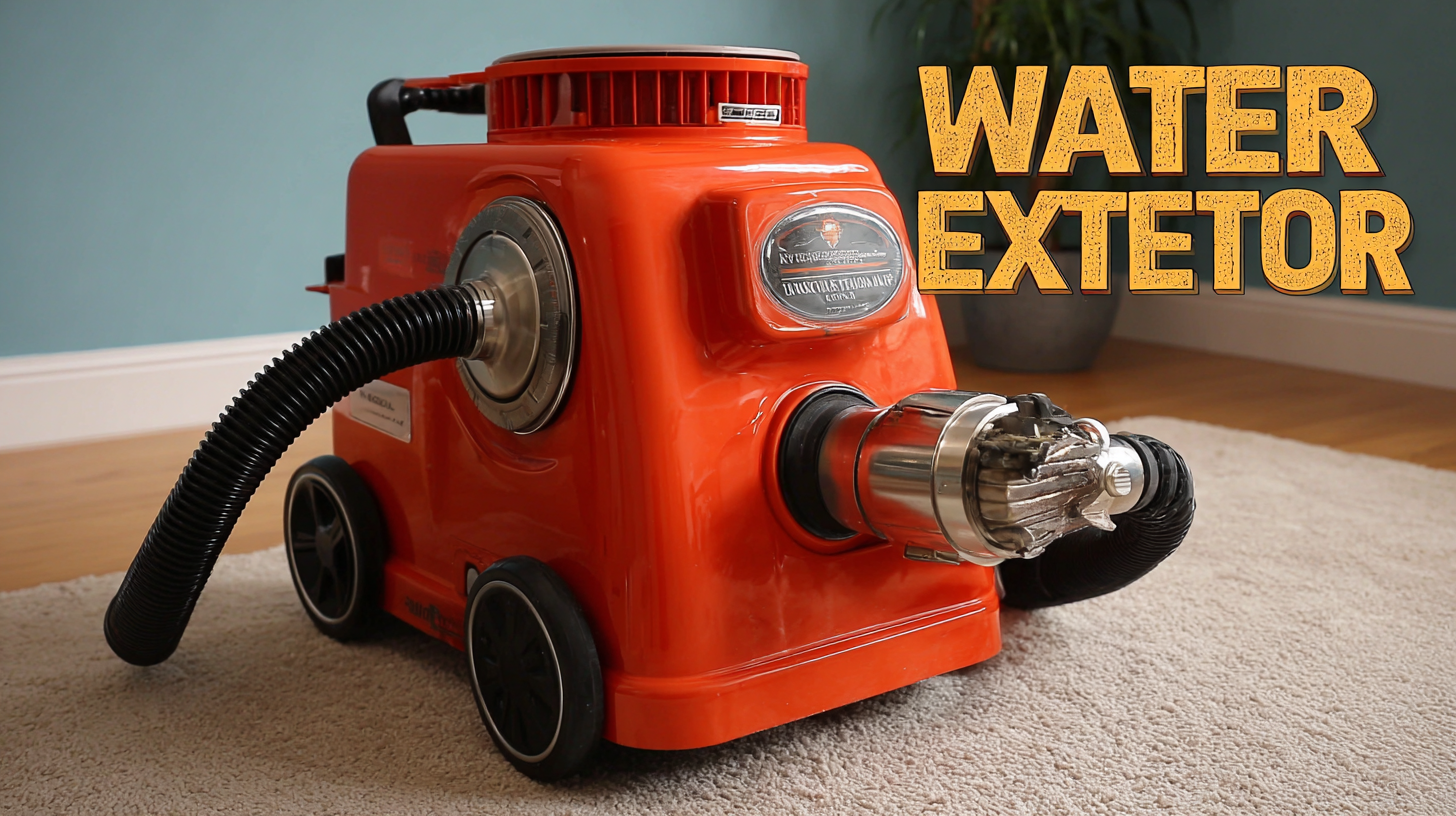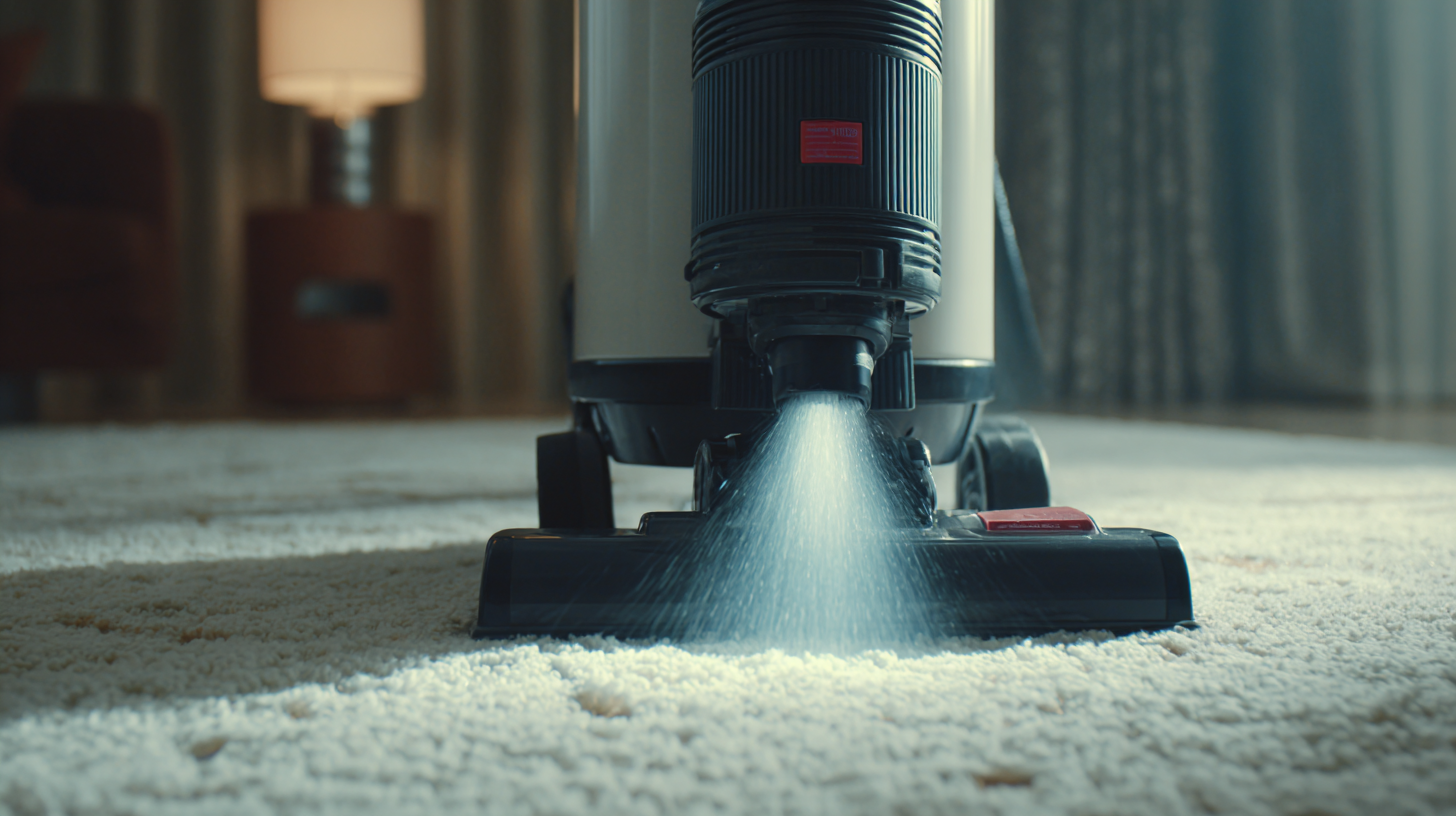Unlocking the Power of the Best Carpet Water Extractor: Technical Specs and Step-by-Step Guide
In the modern cleaning industry, the significance of a high-quality carpet water extractor cannot be overstated. With the global carpet cleaning market projected to reach USD 4.75 billion by 2026, the demand for efficient and effective cleaning solutions is on the rise. Carpet water extractors are essential tools for both residential and commercial applications, playing a crucial role in maintaining hygiene and extending the lifespan of carpets. According to a recent report by Research and Markets, advancements in extraction technology and increased consumer awareness about the importance of cleanliness will drive the growth of this market segment. Therefore, understanding the technical specifications and operational processes of the best carpet water extractors is vital for maximizing their effectiveness and ensuring optimal results. This blog will explore these aspects, offering a detailed step-by-step guide to help users unlock the full potential of their carpet water extractor, reinforcing China's commitment to quality manufacturing and global partnerships.

The Importance of Choosing the Right Carpet Water Extractor for Home Maintenance
Selecting the right carpet water extractor is crucial for maintaining the cleanliness and longevity of your home’s carpets. According to a report by the Institute of Inspection, Cleaning and Restoration Certification (IICRC), proper carpet maintenance can extend the life of your flooring by 50% or more, making a good extractor an essential investment. The right model not only enhances cleaning effectiveness but also minimizes the potential for mold and mildew growth, which can arise from excess moisture left in the carpet fibers.
When choosing a carpet water extractor, consider these essential technical specifications: suction power, water lift, and tank capacity. A unit with higher suction power (measured in inches of water lift) ensures efficient water removal, crucial in reducing drying time. Additionally, larger tank capacities allow you to clean larger areas without frequent refills, increasing your productivity.
Tips: Always check for models equipped with adjustable settings; this allows you to tailor the cleaning process based on the specific needs of your carpets. Furthermore, selecting extractors with HEPA filtration helps trap dust and allergens, resulting in a healthier indoor environment. Finally, maintenance matters—regularly check hoses and brushes for blockages to ensure optimal performance.
Key Technical Specifications to Consider for Optimal Water Extraction Performance
When selecting the best carpet water extractor, understanding key technical specifications is vital for achieving optimal water extraction performance. One of the most critical metrics to consider is the extractor's vacuum power, measured in inches of mercury (inHg). A higher vacuum power indicates a stronger ability to remove moisture from carpets, leading to quicker drying times and reduced risk of mold growth. Additionally, look for a machine with multiple vacuum motors, as this can enhance efficiency and improve overall cleaning results.
Another essential specification is the water lift capability, which determines how effectively the extractor can pull water from deep within the carpet fibers. Ideally, you want a water lift measurement of at least 100 inches for robust performance. Additionally, the solution tank capacity plays a crucial role – a larger tank allows longer cleaning sessions without frequent refills. Lastly, consider adjustable pressure settings; the ability to modify pressure allows you to tailor the extraction process based on carpet type and soil level, ensuring thorough cleaning while protecting delicate fibers.

Step-by-Step Guide to Effectively Using a Carpet Water Extractor
When using a carpet water extractor, it’s crucial to follow a step-by-step guide to ensure optimal results. Begin by preparing the area. Remove any furniture, and vacuum the carpet thoroughly to eliminate dust and debris. This initial step helps the extractor work more effectively, allowing it to penetrate deep into the fibers and lift out embedded dirt.
Next, fill the extractor with the recommended cleaning solution. Be sure to follow the manufacturer’s instructions regarding dilution ratios. For best results, test a small, inconspicuous area of the carpet first to ensure the cleaner won’t cause discoloration. Also, remember to adjust the pressure settings according to the type of carpet you are treating; delicate rugs may require lower pressure to avoid damage.
Finally, when extracting the water, move the machine slowly in overlapping passes to maximize extraction efficiency. After the extraction, allow the carpet to dry completely before replacing any furniture. This will help prevent mildew and odors from developing. Always remember to clean your extractor after use to keep it in good condition for your next cleaning session.
Comparative Analysis of Top-Rated Carpet Water Extractors in the Market
When it comes to maintaining clean carpets and upholstery, having the right tools is essential. In our comparative analysis of top-rated carpet water extractors in the market, we found that portable carpet cleaners shine in their ability to tackle tough messes effectively. Recent tests show that these machines are particularly adept at handling spills from pets and food, making them indispensable for households. For instance, models with advanced suction technology not only lift stains but also extract moisture, which helps in preventing mold growth—a critical factor for prolonging the life of your carpets.
Reports indicate that lightweight and cordless designs are becoming increasingly popular among consumers who prioritize ease of use. With brands innovating compact yet powerful extractors, the market offers devices that boast battery life extending up to 30 minutes on a single charge. Moreover, performance rankings from various industry analyses highlight that certain models consistently excel in cleaning efficiency and user satisfaction. As cleaning expectations evolve, these portable machines make maintaining pristine carpets an achievable task for everyone, from busy families to pet owners.
Unlocking the Power of the Best Carpet Water Extractor: Technical Specs and Step-by-Step Guide
| Model | Suction Power (in inches) | Water Tank Capacity (in gallons) | Weight (in lbs) | Cord Length (in feet) | Price Range (in USD) |
|---|---|---|---|---|---|
| Model A | 90 | 3 | 25 | 20 | $250 - $300 |
| Model B | 85 | 2.5 | 22 | 15 | $200 - $250 |
| Model C | 95 | 4 | 27 | 25 | $300 - $350 |
Future Trends in Carpet Cleaning Technologies and Their Impact on the Industry
The carpet cleaning industry is on the brink of significant transformation as innovative technologies reshape traditional cleaning methods. With the global carpet cleaning services market poised for considerable growth—projected to reach $67.2 billion in 2024 and $117.8 billion by 2032—companies must adapt to stay competitive. Carpet water extractors, equipped with advanced features and enhanced efficiencies, are becoming essential tools for professionals in the industry. These advancements not only streamline cleaning processes but also improve sustainability practices, a rising demand among consumers.
As we look ahead, several trends are emerging that will further influence the carpet and cleaning services landscape. Environmental concerns are driving the development of eco-friendly cleaning solutions, while automation and robotics are gaining traction, promising to increase productivity and reduce labor costs. The growing emphasis on health and hygiene is also reshaping market demands, pushing for more effective grime and bacteria removal methods. Understanding these trends will be crucial for stakeholders aiming to leverage new technologies and meet the evolving expectations of customers in this dynamic market.


